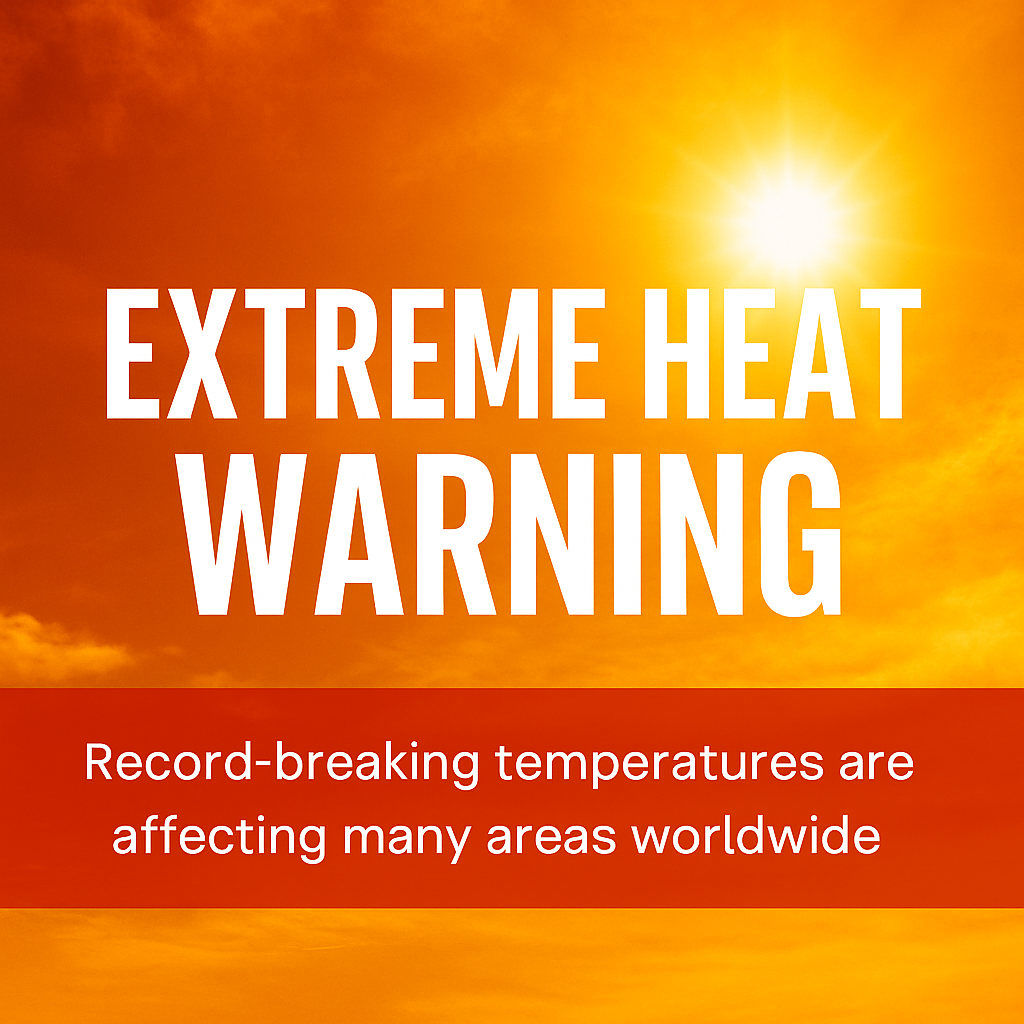In recent weeks, extreme heat warnings have been issued across North America, Europe, Asia, and parts of the Southern Hemisphere. From Phoenix and Madrid to New Delhi and Tokyo, record-breaking temperatures are pushing cities to their limits, straining power grids, endangering public health, and sparking renewed concern over climate change.
Regions Facing Unprecedented Heat
- United States: Large parts of the Southwest, including Arizona, Nevada, and Texas, are under prolonged extreme heat warnings, with temperatures exceeding 45°C (113°F). Power demand has surged as residents rely heavily on air conditioning, leading to rolling blackouts in some areas.
- Europe: Southern Europe is sweltering under a dome of hot air from North Africa. Italy, Greece, and Spain have seen multiple days above 42°C (108°F), prompting school closures and wildland fire alerts. Paris recorded its hottest July since 1947.
- Asia: In China, Japan, and India, heat indexes have soared well above 50°C (122°F) in some inland regions. Governments have issued advisories for outdoor workers and vulnerable populations, especially the elderly.
- Australia and South America: Though it’s winter in the Southern Hemisphere, parts of northern Australia and Brazil have reported unusually warm conditions, disrupting seasonal crop cycles and rainfall patterns.

What’s Causing This Surge in Heat?
Several overlapping factors are contributing to the spike in extreme heat events:
1. Climate Change and Global Warming
According to climate scientists, the planet’s average temperature has risen by over 1.1°C since pre-industrial times, largely due to greenhouse gas emissions. This gradual warming amplifies the intensity and frequency of heatwaves. The current extreme heat is no longer a “surprise”—it’s a predicted outcome of decades of carbon emissions.
2. El Niño Effect
In 2025, we’re experiencing a strong El Niño pattern, which naturally warms parts of the Pacific Ocean. This alters global weather patterns, often making hot areas hotter and dry regions drier. El Niño years are historically associated with more frequent and severe heatwaves.
3. Urban Heat Island Effect
Cities like Tokyo, Cairo, and Los Angeles are significantly hotter than their surrounding rural areas due to the urban heat island effect—where concrete, asphalt, and buildings absorb and radiate heat more intensely. With more people moving into cities, this phenomenon compounds public health risks.
4. Atmospheric Blocking Patterns
Persistent high-pressure systems, sometimes called “heat domes,” trap hot air over a region for days or weeks. These patterns prevent cloud formation and rainfall, leading to dangerous heat buildup. Meteorologists have identified multiple such systems in both hemispheres this year.
What Can Be Done?
While heatwaves are expected to become more frequent and intense, several adaptation strategies can help mitigate risk:
Early warning systems and community outreach
Green infrastructure in urban areas (trees, reflective surfaces, water features)
Investment in energy resilience and sustainable cooling solutions
Global emission reductions to curb long-term warming
The current extreme heat warnings are not isolated events—they are part of a growing pattern of climate instability. Scientists, governments, and communities must act together not only to adapt but also to address the root causes of global warming. As the thermometer rises, so must our urgency to change.


